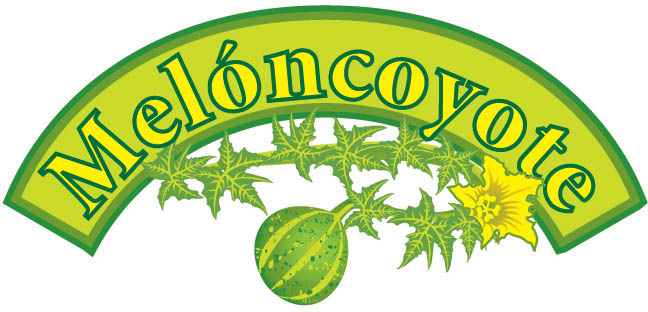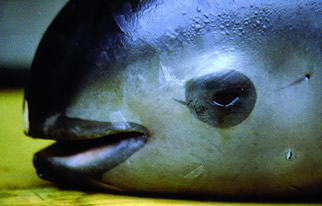
More Community Involvement Essential to Saving the Vaquita Porpoise
Armando Olea
SAN FELIPE, BC
The Vaquita Marina (Phocoena sinus), also known as the Vaquita porpoise or Gulf of California Porpoise in English, weighs about 110 pounds and is just under 5 feet long. It is capable of giving birth every two years. It is also considered to be the most endangered cetacean in the world.
From its first appearance in 1958 (when American biologists discovered several skulls of a then unknown species) to the 1990’s, the size of the Vaquita’s population had never been determined.
The first census was carried out in 1997 and then within just a few years, the numbers of this marine mammal, half whale, half dolphin, decreased from several thousand to around 600. Currently, the population is estimated to be 150 or fewer animals. The Vaquita Marina is endemic to the upper Gulf of California and is one of two small cetaceans worldwide most at risk of extinction.
Many studies have been done in order to determine the causes of the Vaquita’s high mortality rate. The most likely reason was thought to be the lack of water being delivered from the Colorado River into the Gulf of California which could have been affecting the Vaquita’s diet.
But necropsies of dead animals found in the last five years have determined that the low outflow of water from the Colorado River into the Gulf is not the principal reason for their decrease. It is believed that the major reason for their high mortality is their entrapment in nets used to capture fish and shrimp, and that this is worsened because their range is concentrated in a very small area in the Gulf.
For three years, the upper Gulf has been a designated protected area, but this doesn’t seem to be sufficient to avoid the death of between 20 and 40 animals annually. At this time, the estimated size of the Vaquita population is inexact and scientists estimate that only about 150 animals remain.
Therefore, the Mexican federal government and international conservation groups such as the Walton Family Foundation, the Packard Foundation, Hewlett Foundation, the Sandler Foundation, and the Marisla Foundation among others, are making outstanding efforts to compensate those fishermen who agree to turn in their fishing licenses. In exchange, they are given a considerable compensation, stimulus and training to begin new businesses in their communities.

Vaquita. Photo: San Felipe Enjoy Living.
In addition to the Mexican federal government’s plans to invest nearly 16 million dollars in 2009 to protect the Vaquita, there are plans for programs for production and technological restructuring with which not everyone is totally happy.
There is a great mistrust by the fishermen towards the environmental authorities. Right in the middle of this whole situation a challenge has arisen: that of involving the community in the conservation of this species. In Baja California, 98% of the population don’t even know what the Vaquita Marina is, and as Sócrates Bastida Hernández, the State Secretary of Environmental Protection pointed out during the 31st International Meeting on Marine Mammals, celebrated in Ensenada May 19-20, 2008: “It is with great difficulty that we are going to be able to save something when the people aren’t even convinced of its existence”.
With all of this, can it recover? “Yes, when we are able to eliminate the accidental by-catch”, responded Lorenzo Rojas, coordinator of Research and Conservation of Marine Mammals for the national ecology institute (INE). “Biologically speaking, it is possible that the species could recover because it has all the characteristics necessary to be able to do so, once again reaching a population of thousands of individuals”, added the researcher.
The Vaquita Marina has developed in profound isolation that has permitted it to face a decrease in its population without losing its genetic characteristics. This trait demonstrates that endangered species could increase their numbers if the causes of the decrease are confronted and reduced significantly.
However, plans for a true economic restructuring don’t appear to have produced the expected results. So much so that Saúl Rosales, manager of New Ventures in San Felipe, a consultancy firm for sustainable businesses contracted by the federal government, declared last December: “Sadly the resources for new businesses were eliminated, and faced with the lack of information and preparation we have literally created “just small stores rather than innovative businesses in this privileged yet downtrodden region”.
Feliciano Campos, partner of the sustainable development consortium of the Sea of Cortez – DISMAC contends that: “The primary problem is finding a fair balance between what the government has to offer and what the fishermen need.”
What is ironic is that in San Felipe just over 300 permit holders have been compensated, with many of these permits being held by just a few people, thus leaving thousands of fisherman no other option but to return to the sea to fish illegally.
Nonetheless, not everything is nightmarish in the San Felipe-Puertecitos corridor. Local businessmen have involved and integrated local fishermen in new ways in ecotourism and sportfishing, supported by the federal government which is determined to prove that the vocation can be gradually changed.
This year, the national coordinator for the Vaquita conservation program, Luís Fueyo MacDonald, will continue to support coastal fisherman in leaving commercial fishing for other activities, while those who continue to fish must contribute through new fishing methods and technologies that don’t exterminate the Vaquita.
After all, as they say, “there is always something to be afraid of, and the ghost of an embargo against the exportation of shrimp is alive and real” just like what occurred with Mexican tuna, embargoed on two occasions, thus condemning entire populations along the Mexican Pacific to poverty.
Certainly, there is optimism and everyone in San Felipe knows that the only way out is tourism, as well as sportfishing, and that these activities will gradually incorporate new generations.
The children of fishermen some day will end up conserving the species or, the worst case scenario is that they will only know that a cetacean looking like a pygmy whale and called a Vaquita Marina once swam in the waters off of San Felipe.
